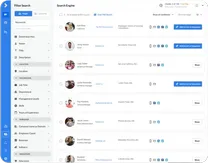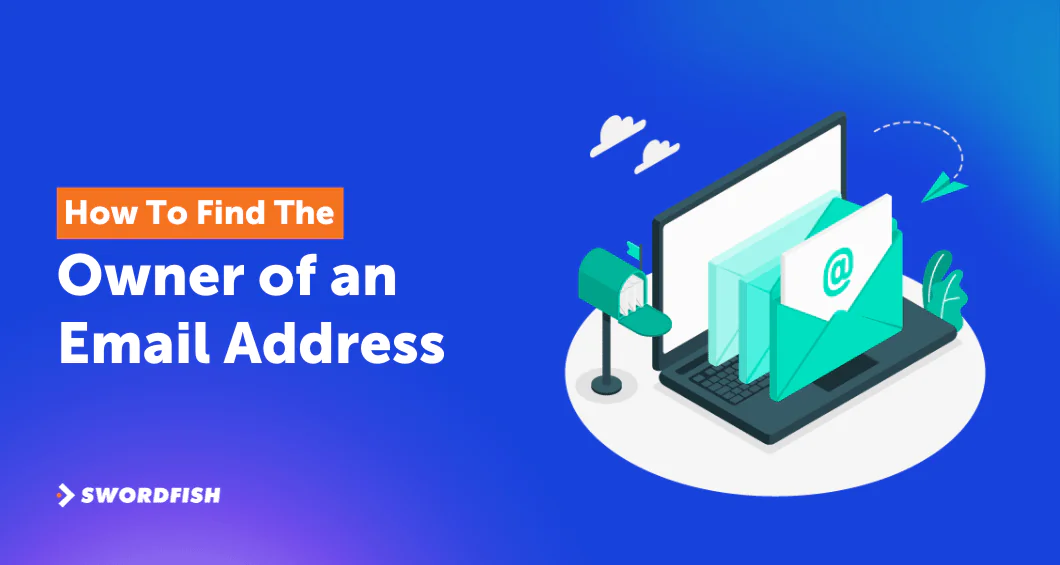
Have you ever come across an email address and are curious about who it’s from? Figuring out who’s behind an email is not only exciting but also important.
To find the owner of an email, you can use reverse email lookup, CRM tools, browser extensions, social media searches, and Google searches. Plus, you can trace the IP address, or contact the company associated with the email domain. They ensure effective marketing and sales communications by identifying email owners.
Coming up, we’ll explore various easy and lawful ways to discover who’s behind an email address. We’ll show you smart strategies on how to find the owner of an email address. Identifying unknown email senders is easy when you follow these steps.
Let’s get started!
Why Find the Owner of an Email Address?
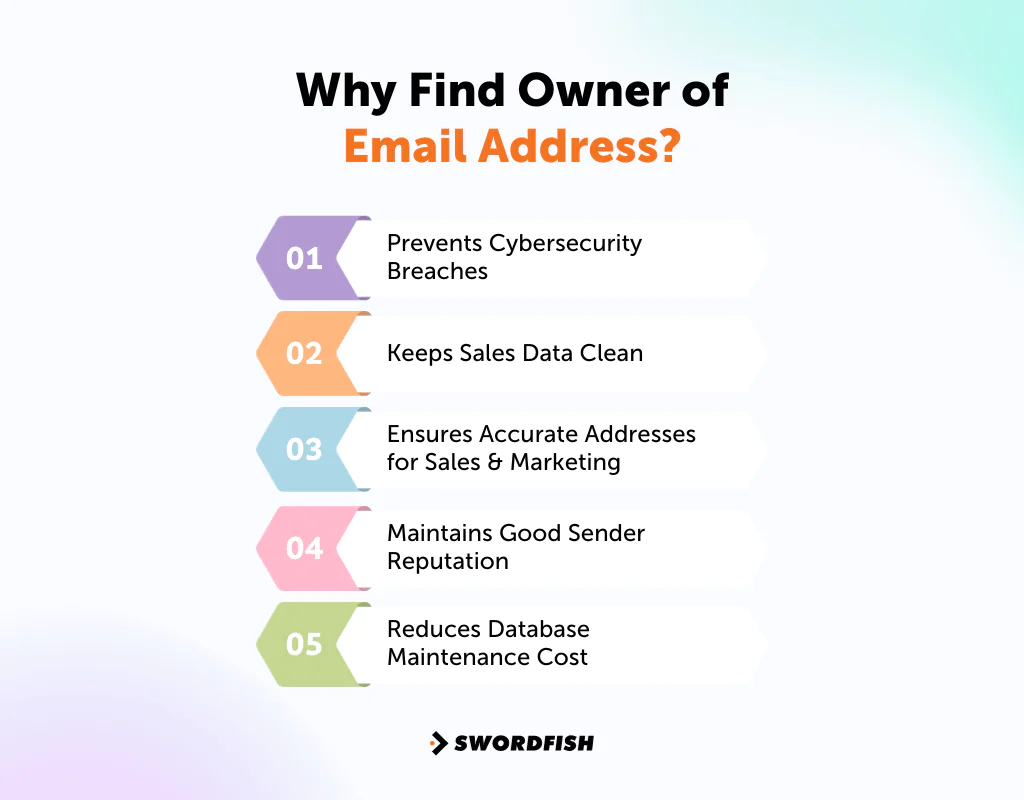
Have you come across BEC scams? These are situations where someone pretends to be your boss or a client and asks you to send money or share information through fake emails. These scams can be costly.
An IBM report stated that each breach could cost about USD 4.45 million on average. Also, the report revealed that a concerning 83% of companies experienced several data breaches in 2022.
Given these statistics, it’s really important to be aware of cyber threats. One key skill is learning how to trace an email address back to its owner. This can help you stay safe and protect your information.
If you’re new to online security, you might also come across terms like what’s virtual private network (VPN) — tools that help mask IP addresses and make tracing online activity harder.
Besides, checking the owners of email addresses has several benefits —
Prevents Cybersecurity Breaches
Cybersecurity incidents often begin with phishing emails. The 2022 Verizon Data Breach Investigations Report indicated a 13% rise in ransomware attacks, continuing a trend seen over the past five years.
By verifying the sender’s address, you can confirm if the email is genuine and if the sender is who they claim to be.
Keeps Sales Data Clean
Email addresses are key pieces of information for leads or customers. They’re important for generating leads, running nurturing campaigns, and sending out special offers. Therefore, you must ensure that this data is accurate and updated.
Ensures Accurate Addresses for Sales & Marketing
Personalized sales emails require time and research. If the email address is incorrect, this effort is wasted. Therefore, it’s important to check the details of the email address owner.
Maintains Good Sender Reputation
Email sender reputation is a score assigned by email providers and Internet Service Providers (ISPs) to anyone who sends out emails.
This score plays a big role in email deliverability, influencing things like how often your emails end up in spam. A higher score means ISPs are more likely to deliver your emails to the people you’re sending them to.
Reduces Database Maintenance Cost
Keeping a contact database and sending out emails involves some expense. By verifying email addresses, you can weed out unnecessary ones from your list. This reduces the number of people you’re sending emails to and, as a result, cuts down the cost of your email campaigns.
How to Find Owner of Email Address in Gmail for Free
If they used their real name during setup, try this simple Google Calendar trick —
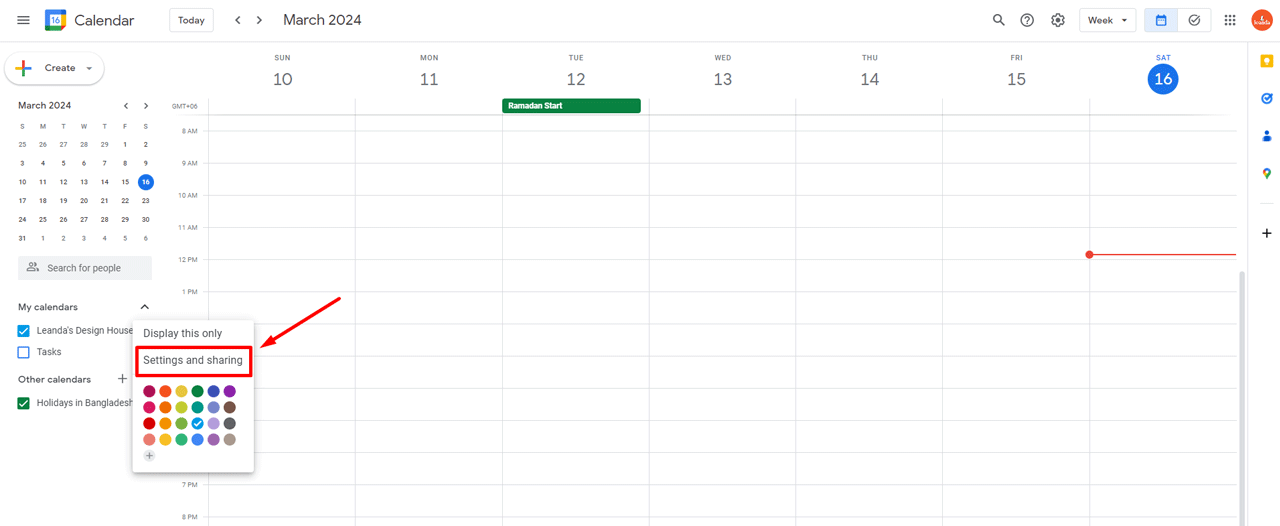
1. Go to ‘share with specific people.’
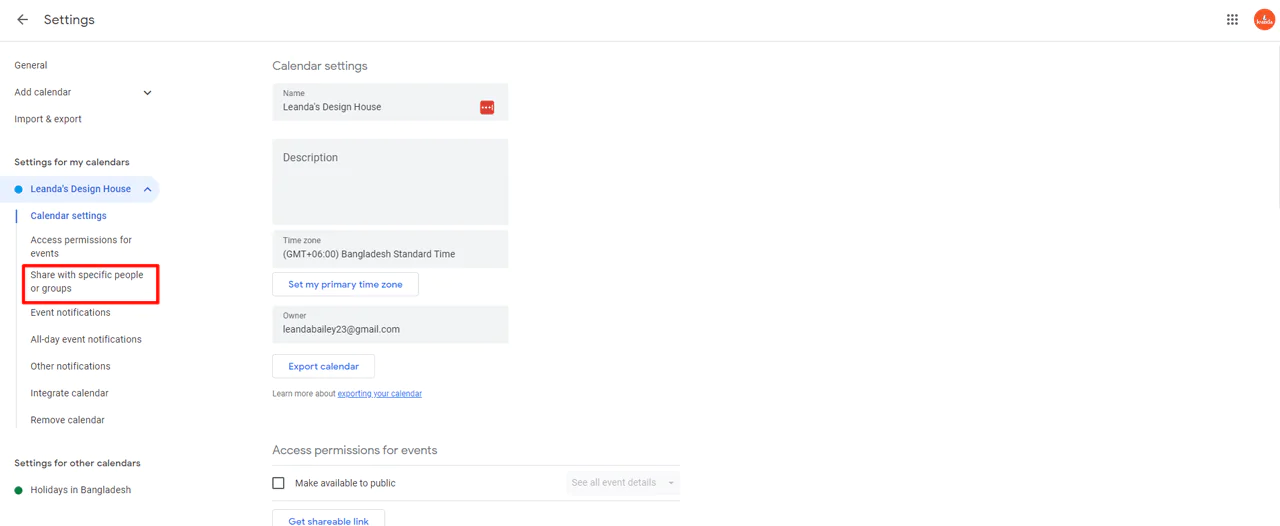
2. Click ‘add people.’
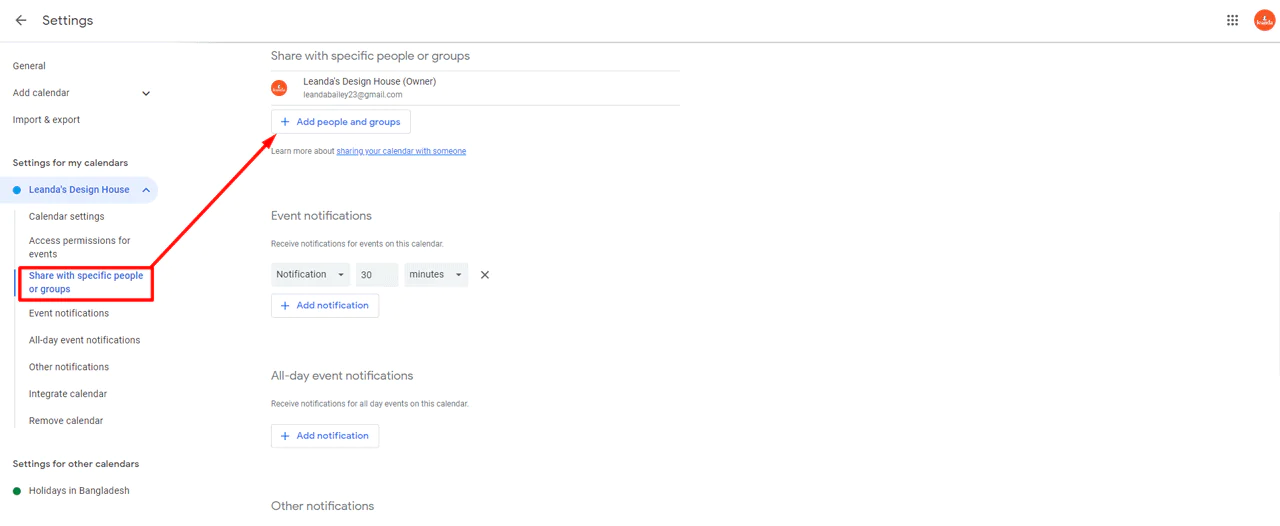
3. Type in the Gmail address.
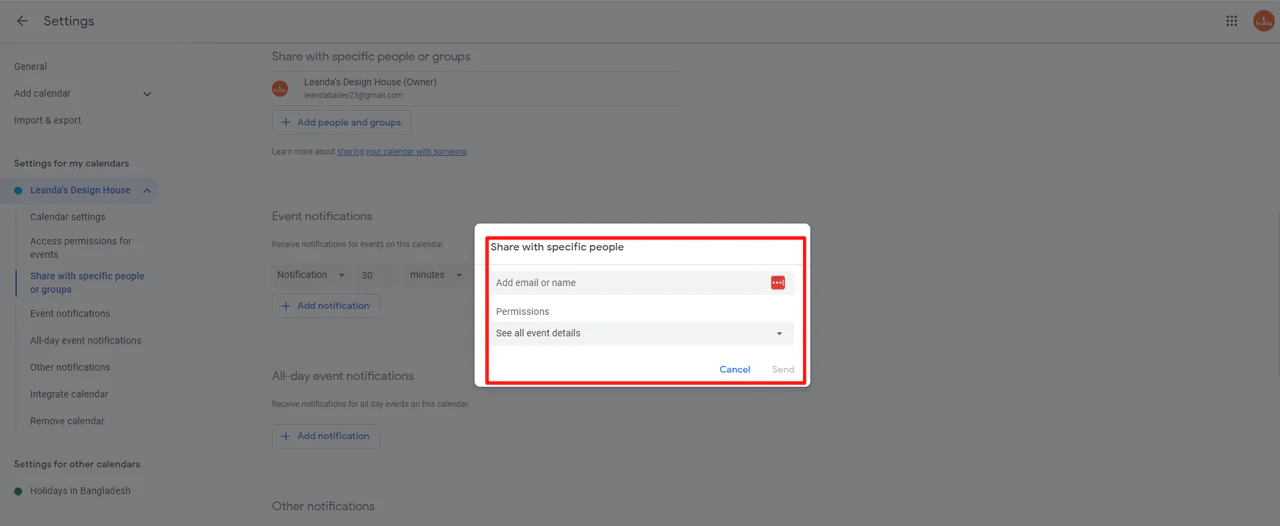
4. The owner’s name and photo should appear if they’re linked to the account.
However, for a deeper search, you can consider the methods discussed afterward.
How to Find Out Whose Email is This
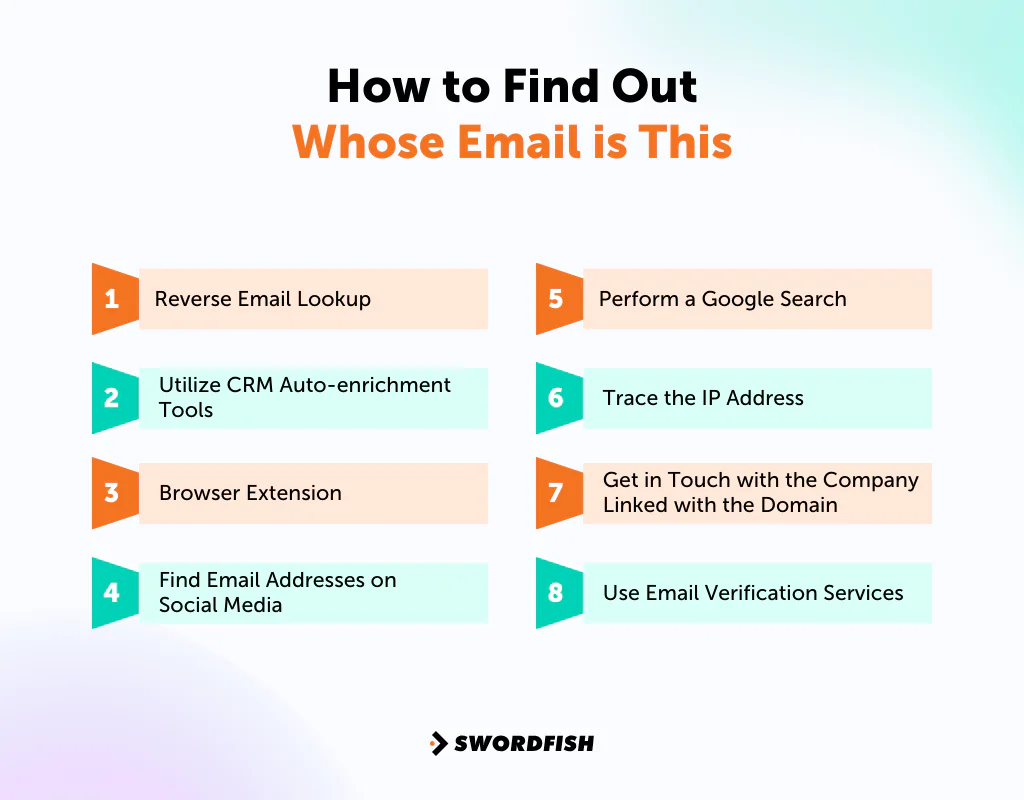
Email can be dangerous sometimes. Some people use them to trick you or steal your information. Thus, you should be careful when you reply to emails.
In that case, you need to find the owner of the email address to stay safe. Here are some methods to find out who owns an email —
1. Reverse Email Lookup
If you want to check email address owners in different places, you can use a paid tool like Swordfish AI.
Swordfish AI offers you access to an impressive pool of over 3.5 billion data profiles, helping you fill any gaps in your contact list. A standout feature is the reverse search. Just enter an email address, and you’ll get details like the owner’s name, company, and even cell phone number.
Here’s how it works —
- Go to the Swordfish AI Reverse Search webpage.
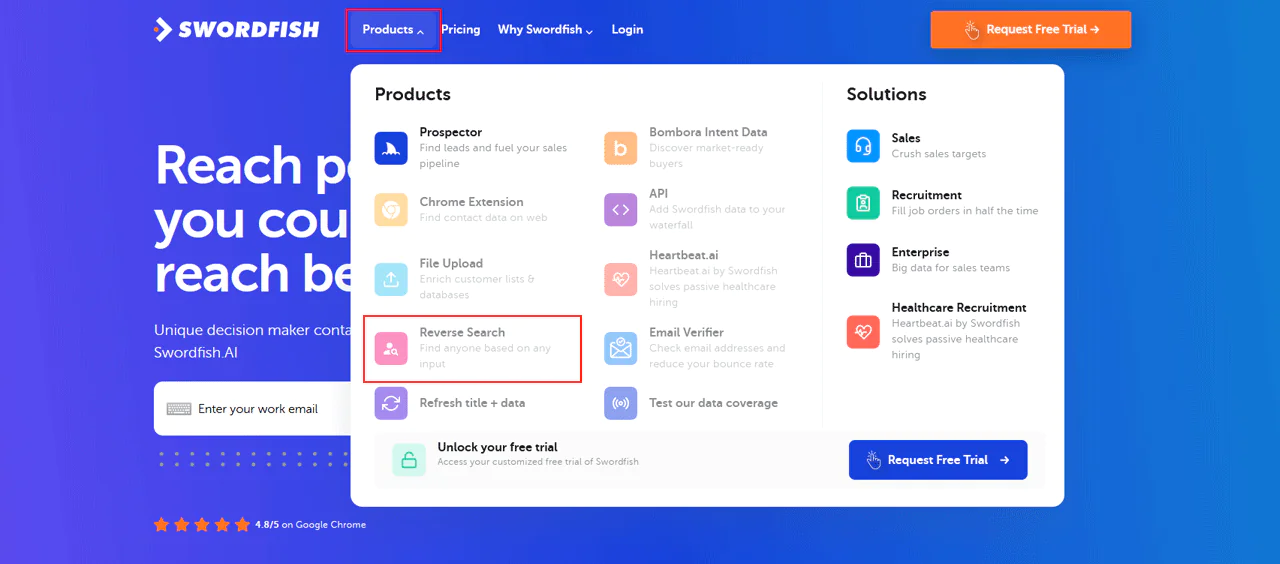
- Choose ‘Email’ from the list of choices.

3. Type in the email address and press search.
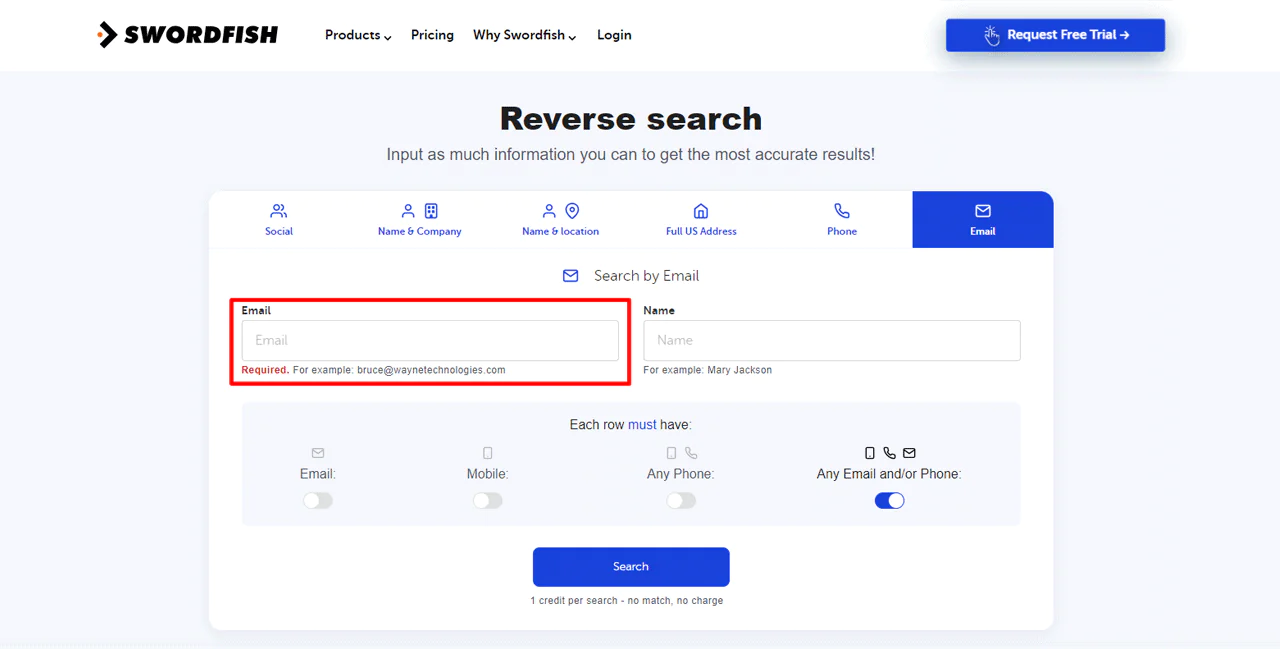
- Swordfish AI will then show you any contact information it has.
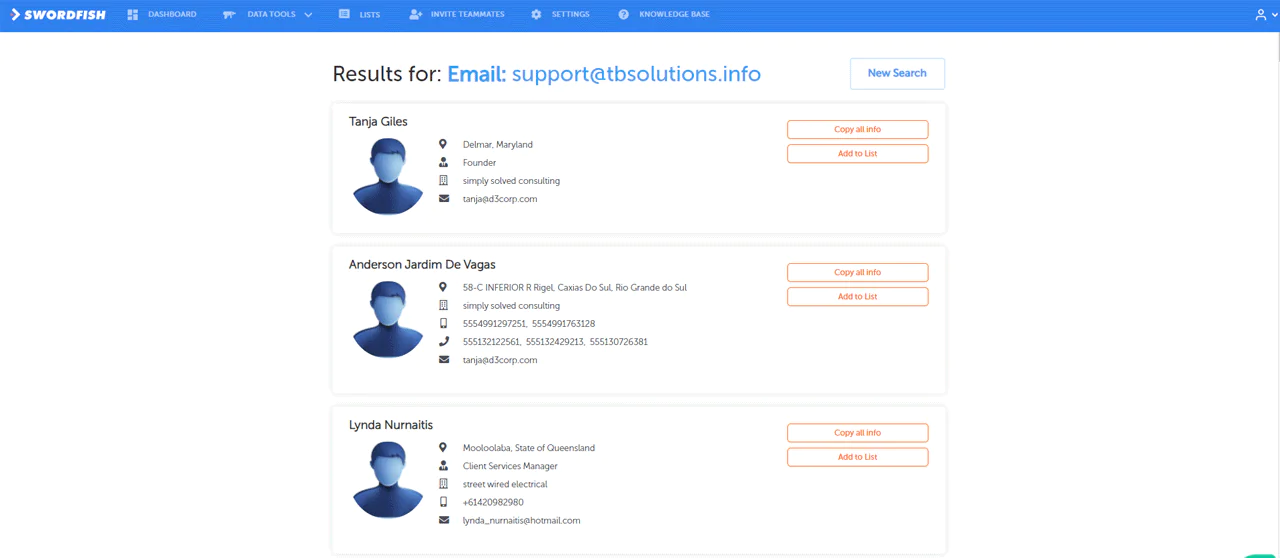
Plus, you can even find names with email addresses using this feature. It’s useful if you’re looking to reach out to specific individuals, verify who they are, or expand your network.
2. Utilize CRM Auto-enrichment Tools
When wondering how to find the owner of an email address, CRM auto-enrichment tools can be a real lifesaver. Many customer relationship management (CRM) systems like Zoho, Salesforce, and Fresh sales include tools that make your life easier.
These tools scan websites and social media to gather current email addresses and other contact details. Moreover, you can use a contact finding tools to find accurate email addresses for any professional need efficiently.
You don’t have to spend hours searching on Google or Facebook to figure out who an email address belongs to. The CRM automatically handles this, keeping your contact list fresh and accurate.
It’s a straightforward, time-saving solution that acts like your personal contact manager.
3. Browser Extension
For Google Chrome users, there’s a simple approach on how to find out who owns an email address. Just use a browser extension like Swordfish AI Chrome Extension.
Not only does it help with email addresses, but it also finds other details like job titles, companies, phone numbers, and social media links.
Here’s how you can use it —
1. Search for the extension on Google.
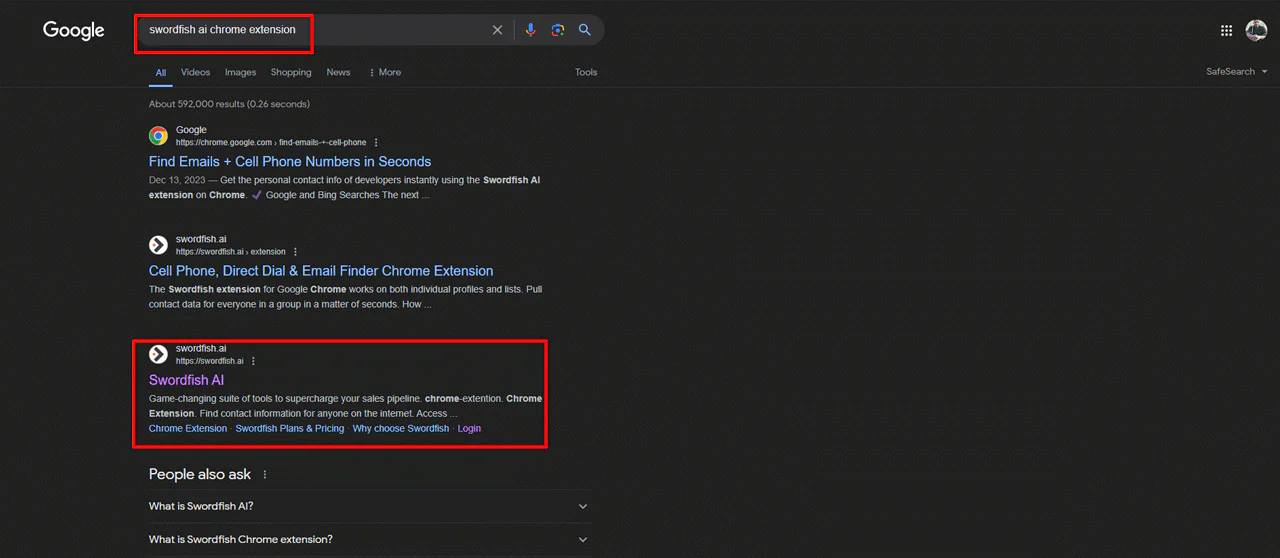
2. Install it on your Chrome browser.
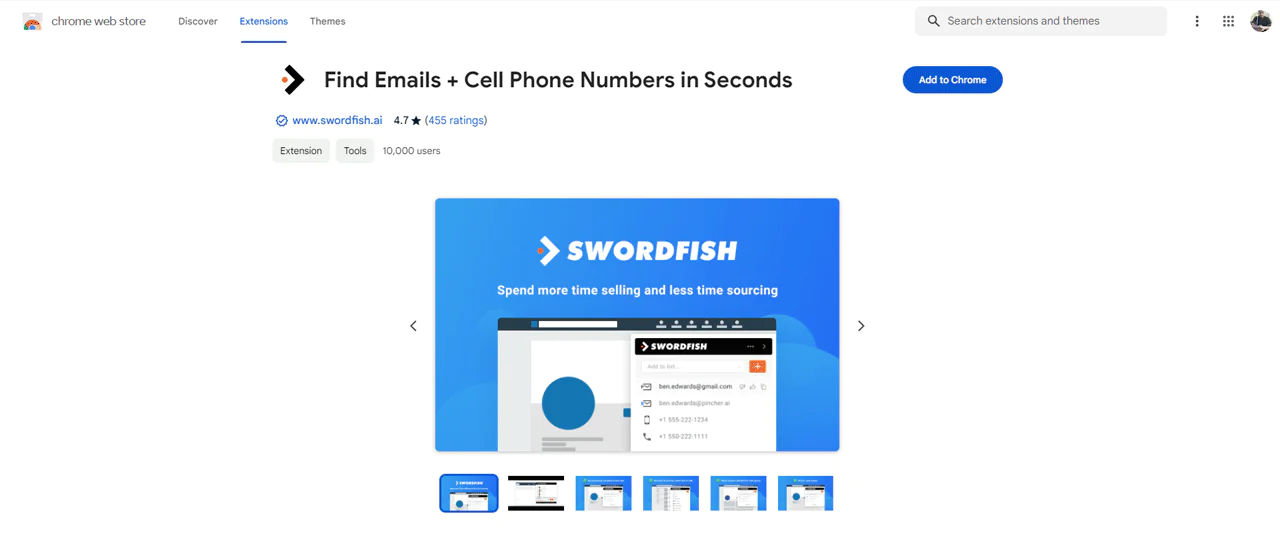
3. Then, visit a profile on Instagram, Twitter, or LinkedIn.

4. Next, click on the icon on the bar

5. The extension will automatically scan the profile and pull up any available public information.
4. Find Email Addresses on Social Media
If people share them publicly, you can find email addresses on social media profiles. You should also ensure the email addresses match your prospects before contacting them.
If you sell to consumers, you can search for email addresses on Facebook and see if any profiles show up. If you sell to businesses, you can use LinkedIn for someone’s email address. Some users have their work email addresses on their page, even if you don’t know them.
5. Perform a Google Search
6. Trace the IP Address
Tracing an IP address from an email is a more technical approach, especially when you’re keen on security and want to find the owner of the email address.
Depending on your email service, whether it’s Gmail, Outlook, or Yahoo, this method varies a bit, but the core steps remain the same.
Here’s how it goes: You get an email and want to dig deeper. Head over to the message options and look for the email header. This is where email services differ a bit – the header’s location varies. In the header, you’ll find the IP address of the sender.
What next? Take this IP address and use a tool like whatismyip.com. This gives you more details about where the email came from. But remember, this method isn’t foolproof. If the sender uses a VPN, the IP address might lead you on a wild goose chase.
VPNs mask the real IP address for extra security, making the traced location potentially misleading.
7. Get in Touch with the Company Linked with the Domain
Sometimes, the simplest way to find out who’s behind an email is just to ask. Let’s say you’ve got an email from someone new or you’re double-checking an address from a list. The domain of the email often points you to the organization to which it belongs.
Here’s what you can do —
1. Look at the email address.
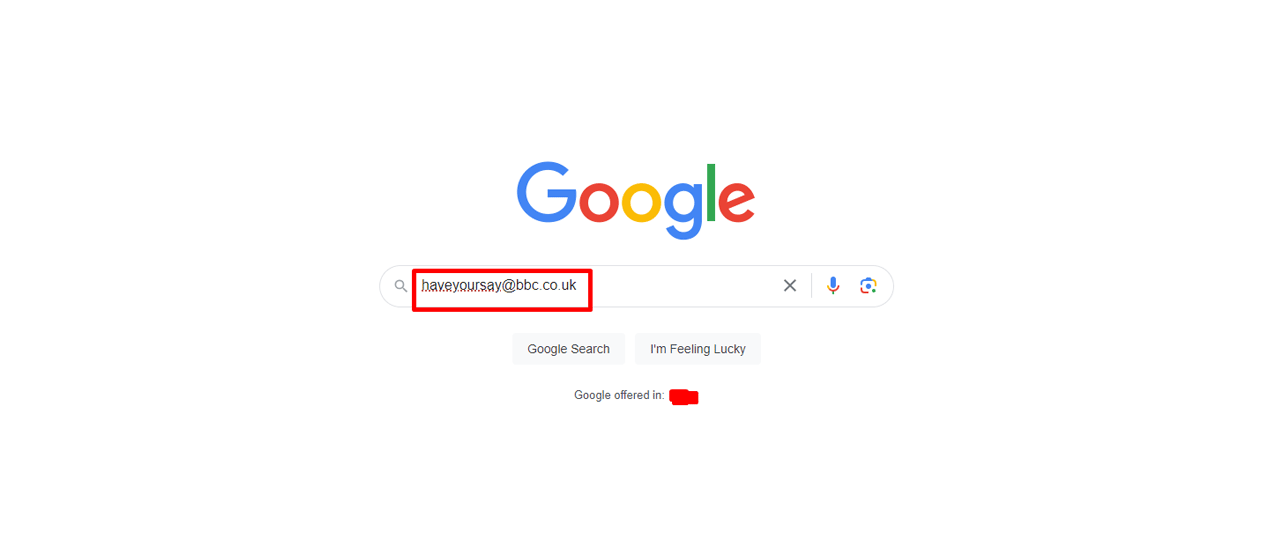
2. The part after the ‘@‘ symbol is the domain, usually the company’s name.
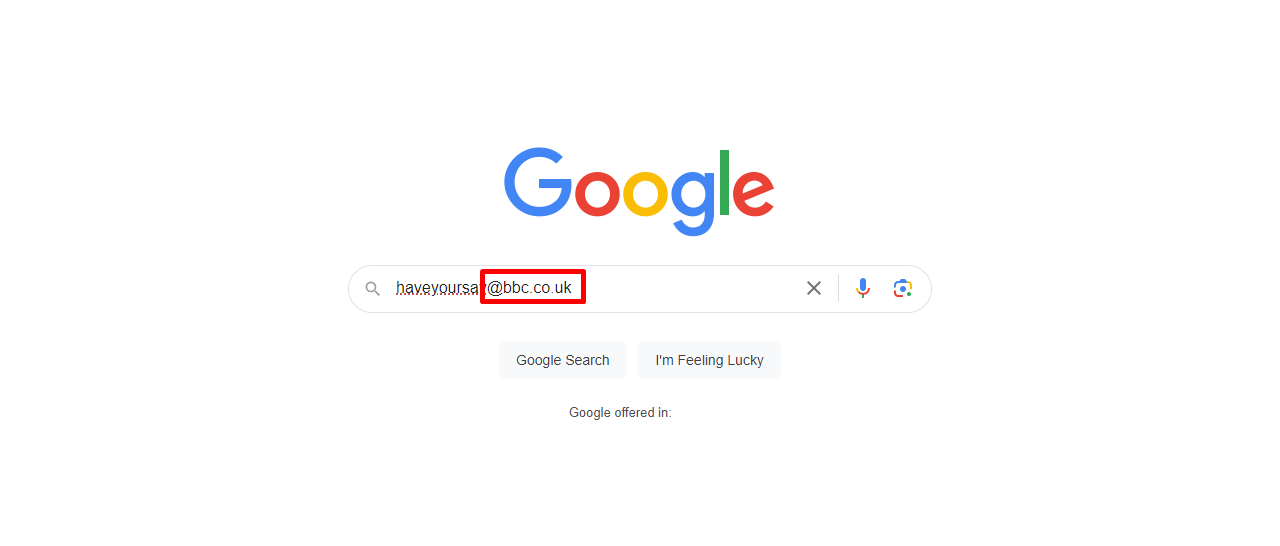
3. Pop that name into Google and find their contact number.
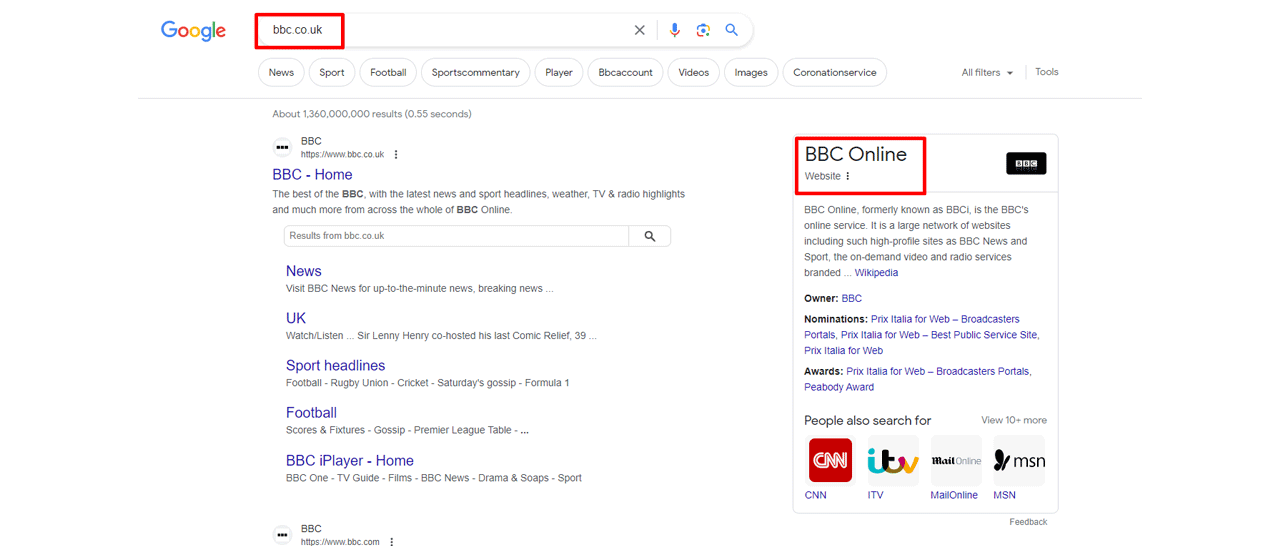
4. Give them a call and ask if the email address is linked to their organization and who it belongs to.
Remember, this method is more direct, but it’s best kept as a backup plan. It’s a bit more time-consuming compared to other strategies. But if you’ve tried everything else and still need answers, this old-school approach can be quite effective.
8. Use Email Verification Services
You can use email verification services to find out who owns an email address. These services check the email to see if it’s real and can sometimes tell you who it belongs to.
Well, you just put the email address into their website, and the service does the work, searching through data to find a match. It’s like doing an internet search but specifically for email addresses.
This way, you can quickly find out more about the person behind an email.
Is it Legal to Find Out Who Owns an Email Address?
Finding out who owns an email address involves various legal and ethical considerations. Here are some key points to keep in mind:
- Legality Varies: The legality of searching for an email address owner depends on how you obtain the information and for what purpose.
- Privacy Laws: Respect privacy laws and regulations, which can differ by country. Unauthorized access to personal information can be illegal.
- Consent Matters: If you have the email owner’s consent to search for their information, it’s generally legal.
- Public Information: Using publicly available sources to find information about the email address owner is usually permissible.
- Avoid Illegal Methods: Never use hacking or unauthorized methods to access someone’s personal information.
What Steps Can I Take If I Suspect Someone Is Using a Fake or Misleading Email Address?
If you suspect that someone is using a fake or misleading email address, it’s important to proceed cautiously and responsibly. Here are steps you can take to address your concerns:
- Verify the Email: Use online tools or services to check the authenticity of the email address.
- Do Not Respond: Avoid engaging with suspicious emails to prevent potential scams or phishing attempts.
- Report It: If the email is from a service or platform, report it to their support team for investigation.
- Check for Clues: Analyze the email’s content for any inconsistencies or red flags that might indicate it’s fake.
- Use Caution: Be cautious with personal information. Never share sensitive details unless you’re sure of the recipient’s identity.
- Seek Advice: If you’re unsure, consider seeking advice from IT professionals or legal experts on how to proceed.
Conclusion
So far, you’ve learned how to find the owner of an email address using different methods. Whether you want to verify an email sender, reconnect with an old friend, or reach out to a potential customer, you can use these techniques to get the information you need.
Some of the methods are free and easy, such as searching on Google, social media, or email lookup sites. Others require a paid subscription or a tool, such as reverse email lookup services, or CRM tools. You can choose the best method for your purpose and budget.
Don’t let incomplete information slow you down. Utilize Swordfish AI to swiftly uncover reliable cell phone numbers and emails associated with any email address. Try Swordfisha AI and get in touch with key people today.
FAQs
Can I find the owner of an email address if it’s a temporary or disposable email?
Identifying the owner of a temporary or disposable email address can be challenging. These types of email addresses are often used for short-term purposes and may not be tied to a permanent identity. Traditional methods may not be as effective in these cases.
Can an anonymous Gmail email be traced?
Tracing an anonymous Gmail email can be very hard. Gmail keeps users’ information private. Unless the sender leaves clues in the email, finding out who they are without legal authority or advanced technical methods is unlikely.
What steps can I take if I suspect someone is using a fake or misleading email address?
If you suspect someone is using a fake or misleading email address, consider reporting the issue to the relevant platform or service provider. They may have mechanisms in place to address fraudulent or suspicious activities.
Can I find the owner of an email if they use a pseudonym or alias online?
Finding the real identity behind an email address becomes more complex if the owner uses a pseudonym or alias online. Traditional methods may not be sufficient in such cases, and the person’s true identity may remain undisclosed.


 View Products
View Products


